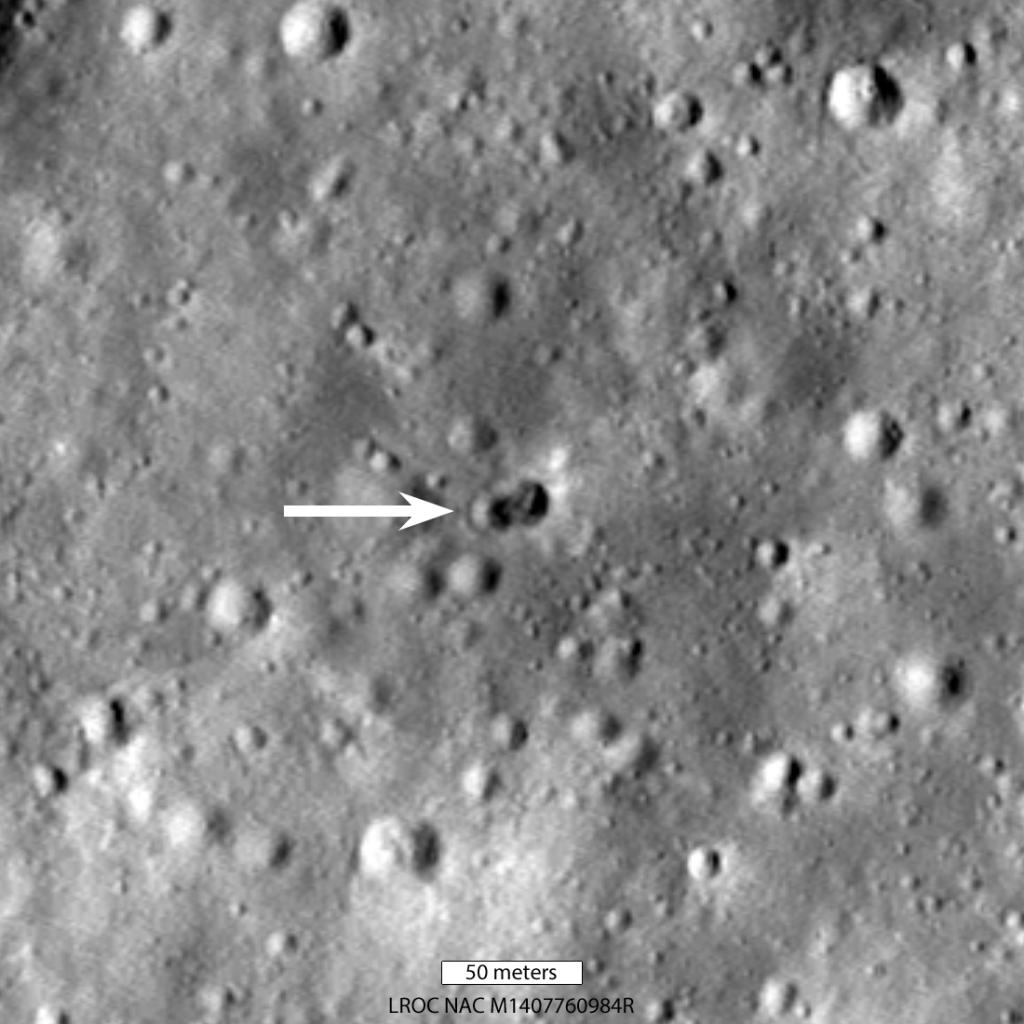- On March 4, a rocket booster slammed into the moon and left behind a double crater.
- NASA's Lunar Reconnaissance Orbiter later spotted the unusual crater on the far side of the moon.
- So far, no country has taken responsibility for the rocket and the resulting collision.
NASA has spotted the crash site of a mystery rocket that slammed into the far side of the moon in March, leaving behind a double crater.
New images taken May 25 and shared by NASA's Lunar Reconnaissance Orbiter on June 24 showed the unusual crater. The collision resulted in two overlapping impact sites — an eastern crater measuring 59 feet (18 meters) across and a western crater spanning 52.5 feet (16 meters).
Astronomers expected the impact after discovering that an unidentified piece of space junk was on a collision course with the moon late last year. But "the double crater was unexpected," the space agency said in a press release. "No other rocket body impacts on the moon created double craters."
NASA says two large masses on each end of the rocket may have caused the two craters, but that would be unusual, since spent rockets tend to have a heavy motor at one end and a lighter empty fuel tank at the other.
According to 2016 data from Arizona State University, at least 47 NASA rocket bodies have created "spacecraft impacts" on the moon.

"I must confess that I'd naively thought it would be easier to find and would have been located shortly after impact," Bill Gray, the astronomer who first discovered the mysterious object and alerted NASA about its eventual collision, wrote on his blog Project Pluto, where he uses software to track near-Earth objects.
He pointed to efforts to find the booster for Apollo 16, which NASA shot at the moon in 1972 to study moonquakes. But before the Apollo 16 booster could hit the moon, NASA lost contact with it. The impact location remained elusive for years.
"Finding one small crater among hordes of craters isn't all that easy," Gray wrote of the Apollo 16 crater, adding, "That crater was found about six years after the other Apollo booster impacts. Compared to that, having to wait about three months looks pretty good."
So far, no spacefaring nation has taken credit — or blame — for the mysterious rocket, reports Universe Today. "Since the origin of the rocket body remains uncertain, the double nature of the crater may indicate its identity," NASA said in a press release.
